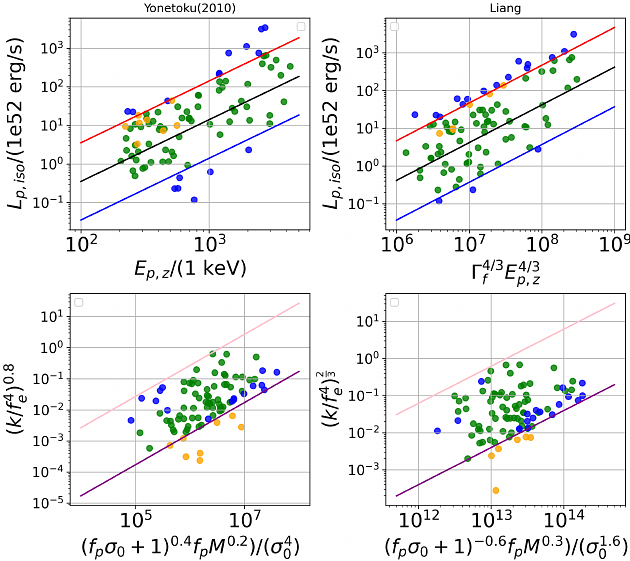Gamma-ray Burst Empirical Correlation between Peak Luminosity and Peak Energy in The ICMART Model

Gamma-ray Burst Empirical Correlation between Peak Luminosity and Peak Energy in The ICMART Model
Xueying Shao, He Gao
AbstractInternal-Collision-induced Magnetic Reconnection and Turbulence (ICMART) model is a widely accepted model for explaining how high-magnetization jets produce gamma-ray burst (GRB) prompt emissions. In previous works, we show that this model can produce: 1) light curves with a superposition of fast and slow components; 2) a Band-shaped spectrum whose parameters could follow the typical distribution of GRB observations; 3) both ``hard to soft" and ``intensity tracking" patterns of spectral evolution. In this work, through simulations of a large sample with methods established in previous work, we show that the ICMART model can also explain the observed empirical relationships (here we focus on the Yonetoku and Liang relations), as long as the magnetic field strength in the magnetic reconnection radiation region is proportional to the mass of the bulk shell, and inversely proportional to the initial magnetization factor of the bulk shell. Our results suggest that during extreme relativistic magnetic reconnection events, an increase in magnetic field strength leads to more intense dissipation, ultimately resulting in a weaker residual magnetic field.